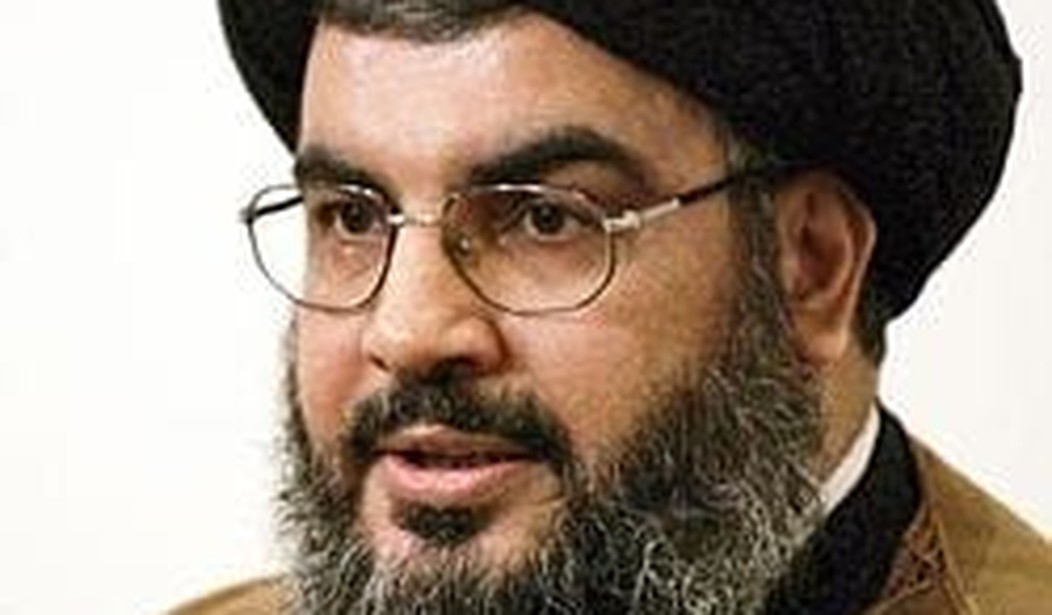WASHINGTON – An expert on Islamist terrorism believes many people often misunderstand the relationship between Hezbollah and Iran, which has changed over time but it is now closer than ever.
Matthew Levitt, a former deputy assistant secretary in the U.S. Treasury Department and a senior fellow at the Washington Institute for Near East Policy, spoke about his latest book, Hezbollah: The Global Footprint of Lebanon’s Party of God, recently at the New America Foundation.
Levitt said understanding the relationship between Hezbollah and Iran is critical to make sense of what the organization is doing at any particular time.
“The U.S. intelligence community now describes the relationship between Iran and Hezbollah as a strategic partnership with Iran as the primary partner,” he said. “We no longer describe this as a patron and proxy relationship.”
He said this partnership helps to explain, in part, why Hezbollah is engaged in more international terror today than at any time since the 1980s.
Levitt said Hezbollah is a multifaceted organization. It is a Shia Islam religious and social movement, Lebanon’s largest militia, a close ally of Iran, and a terrorist organization. The organization operates a legitimate political party in the Lebanese parliament. It is also the de facto overlord of south Lebanon, where it is in charge of a variety of social services.
Hezbollah and Iran both deny the existence of a Hezbollah terrorist component, but intelligence services worldwide have long known of the organization’s operations.
Hezbollah emerged in South Lebanon in the early 1980s as a consolidation of Shia militias pulled together by Iran. Its origins can be traced back to three attacks in Beirut over an 18-month period beginning in 1983. These attacks included bombings of U.S. Marine and French military barracks in Beirut, both of which were part of the multinational force of peacekeepers during the Lebanese Civil War. After these attacks, Hezbollah expanded to include targets abroad intended to exact revenge for actions threatening its own or Iran’s interests.
Over the past three decades, Hezbollah has transformed itself into a sophisticated international army of mercenaries. Although based in Lebanon, Hezbollah’s outreach and influence extend to every continent and continue to grow. Levitt said Hezbollah has a global footprint, spanning the Middle East, Africa, Asia, Europe, South America and even North America.
The organization rolled back its terrorist operations after 9/11 to avoid getting caught in the crosshairs of the war on terror and being compared to al-Qaeda. In the meantime, Hezbollah focused on logistics, procuring arms for its militants in southern Lebanon, and raising funds through criminal and other enterprises to support its network of mercenaries.
He said a wave of attacks marked the resurgence of Hezbollah’s terrorist apparatus. The February 2008 assassination of Imad Mughniyah, the head of Hezbollah’s terrorist wing, led Iran and Hezbollah to reassess how they would proceed with a shadow war targeting Israeli, Jewish, and American interests worldwide.
After Mughniyah’s assassination, Hassan Nasrallah, the head of Hezbollah, spoke at his funeral via video link and announced an “open war” with Israel.
But by 2009 the relationship between Iran and Hezbollah began showing some cracks.
Hezbollah accused Iran of focusing more on protecting its nuclear program than on avenging Mughniyah’s death. Iran, on the other hand, was increasingly dissatisfied with Hezbollah’s run of embarrassing failures starting with a failed 2008 attempt to bomb the Israeli embassy in Baku, Azerbaijan. Some of these plots were foiled by counterterrorism agencies, while others simply failed.
The assassination of an Iranian nuclear scientist in January 2010, however, would put the whole debate to rest.
As a result, Iranian leaders settled on a campaign of retaliation and violence targeting Israeli tourists, government figures, and targets broadly representative of Israel or the Jewish community. To exact revenge on covert attacks to its nuclear program, the Iranians put together a dedicated unit within its Qods Force targeting Western and Israeli diplomats.
Levitt said Hezbollah continues to engage in terrorist operations around the global at a pace not seen since the late 1980s.
In 2012, an attack on a tourist bus killed six and wounded 35 in Burgas, Bulgaria. A few days earlier, an almost identical plot targeting Israeli tourists as they got off their plane onto a tourist bus was thwarted in Cyprus. In the months that followed, more threats arose, prompting the Israeli government to issue travel advisories covering countries like Cyprus, Greece, Bulgaria and Ukraine.
In June, the European Union designated Hezbollah’s terrorist and military elements as an international terrorist organization, partly in response to the attack in Bulgaria.
The men involved in the bombing fit a pattern that Hezbollah has long employed of recruiting operatives with Western nationalities and passports and then using these recruits to carry out operations abroad.
Levitt said a complex organization like Hezbollah should be judged by the totality of its operations.
“Anybody who says they are just terrorists and that they are Iranian proxies are just wrong. It would be much easier if that were the case,” he said. “But it is also the fact that anybody who says they’re only political, only social, and only a standing militia – that’s also equally wrong. If you wanna understand them holistically, with Nasrallah at top of all the decision-making, you have to appreciate all of these different things.”








Join the conversation as a VIP Member